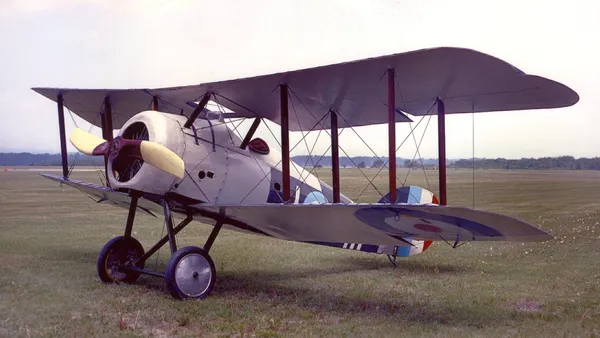Snipe (Total: 5,142, Canadian: 3, Group 0)
Sopwith Snipe

The Sopwith 7F.1 Snipe was a British single-seat biplane fighter of the Royal Air Force (RAF). It was designed and built by the Sopwith Aviation Company during the First World War, and came into squadron service a few weeks before the end of the conflict, in late 1918.
The Snipe was not a fast aircraft by the standards of its time, but its excellent climb and manoeuvrability made it a good match for contemporary German fighters. It was selected as the standard postwar single-seat RAF fighter and the last examples were not retired until 1926.
The resultant design, as replacement to the successful Sopwith Camel, called Snipe by Sopwith, was in its initial form a single-bay biplane, slightly smaller than the Camel, and intended to be powered by similar engines. The pilot sat higher than in the Camel while the centre-section of the upper wing was uncovered, giving a better view from the cockpit. Armament was to be two Vickers machine guns.
The Snipe's structure was heavier but much stronger than earlier Sopwith fighters. Although not a fast aircraft for 1918, it was very manoeuvrable, and much easier to handle than the Camel, with a superior view from the cockpit - especially forwards and upwards. The Snipe also had a superior rate of climb, and much better high-altitude performance compared with its predecessor, allowing it to fight Germany's newer fighters on more equal terms. Further modifications were made to the Snipe during the war and postwar. The Snipe was built around the Bentley BR2 engine - the last rotary to be used by the RAF. It had a maximum speed of 121 mph at 10,000 ft compared with the Camel's 115 mph (185 km/h) at the same altitude and an endurance of three hours. Its fixed armament consisted of two 0.303 in (7.7 mm) Vickers machine guns on the cowling, and it was also able to carry up to four 25 lb (11 kg) bombs for ground attack work, identical to the Camel's armament. The design allowed for a single Lewis gun to be mounted on the centre section in a similar manner to those carried by the Dolphin - in the event this was not fitted to production aircraft.
The Canadian Air Force (CAF) operated the Snipe after the war, but it was phased out in 1923, a year before the Royal Canadian Air Force (RCAF) was formed. Wikipedia
Snipe 7F.1 serial E8102
s/n E8102
E 8102
Known Units:
Had been flown by Major W.G. Barker, VC, in WW 1, with No. 201 Squadron, RNAS/RAF. Category B crash at Camp Borden, Ontario on 2 June 1921. Fuselage now preserved in Canadian Aviation Museum, Rockcliffe, Ontario.last update: 2025-February-05
1921-June-24 Struck off Strength 2019-08-20
Snipe 7F.1 serial E8213
s/n E8213
E 8213
Known Units:
Part of 1919 Imperial Gift. Never operated or registered in Canada, held as spares.last update: 2025-February-05
1922-February-07 Struck off Strength 2019-08-20
Snipe Snipe 7F.1 serial G-CYDZ
s/n GCYDZ
Rushton Proctor
G-CYDZ
Known Units:
Ex RAF E7649. Received from RAF at Washington, DC, not part of Imperial Gift. Had been flown by RAF staff officers serving in Washington. Used at Camp Borden in 1921.last update: 2025-February-06
1921-February-11 Taken on Strength 2022-02-07
1923-October-22 Struck off Strength Written off in crash 2019-08-20
 Wikipedia Sopwith Snipe
Wikipedia Sopwith Snipe Harold A Skaarup Web Page
Harold A Skaarup Web Page